The zero of a polynomial are nothing but its roots, also known as its solutions. In mathematics, the roots or solutions of a polynomial, also known as zeros, are the values of the variable that make the polynomial equal to zero. Having a grasp of these zeros is essential for solving polynomial equations, examining polynomial functions, and utilizing them in disciplines like engineering, physics, and computer science. Let us learn about Zero polynomial.
Zero of a Polynomial
There are certain variable values for which a polynomial equates to zero. These values are known as the roots of a polynomial. At times, they are known as the roots of the polynomials. Usually, we seek the roots of quadratic equations in order to find the solutions for the given equation.
The solutions for f(x) = 0 are the roots of the polynomial f(x). In this case, f(x) represents a function of x, and the roots of the polynomial correspond to the x values where f(x) equals zero.
Zeros of a Polynomial
The quantity of zeros of a polynomial is determined by the degree of the equation f(x) = 0. The zeros of the polynomial are the domain values that result in a range of zero for the function. Visually, the roots of the polynomial coincide with the places where the graph of y = f(x) intersects the x-axis. We will delve further into this topic in the following section about plotting the roots of a polynomial on a graph.
Zero Polynomial Definition
A zero of a polynomial p(x) is the value of x for which the value of p(x) is 0. If k is a zero of p(x), then p(k)=0.
For example, consider a polynomial p(x)=x2−3x+2.
When x=1, the value of p(x) will be equal to
P(1)=12−3×1+2
=1−3+2
=0
Since p(x)=0 at x=1, we say that 1 is a zero of the polynomial x²−3x+2
How to Find Zeros of Polynomial
Zeros of a polynomial can be described as the locations at which the entire polynomial equals zero. A polynomial that evaluates to zero is known as a zero polynomial. The highest exponent of the variable x determines the degree of a polynomial. Let us understand how to find zeros of a polynomial for different degree polynomials.
Linear Polynomial
A polynomial having the degree 1 is known as a linear polynomial. The standard form of linear polynomial is ax + b, where a and b are real numbers and a≠0. For example: 9x + 2 is a linear polynomial. The zero of linear polynomials can be calculated by substituting y = 0, and on simplification we have ax + b = 0, or x = -b/a.
Quadratic Polynomial
A polynomial having the degree 2 is known as a quadratic polynomial. The standard form of quadratic polynomials is ax2 + bx + c, where a, b and c are real numbers and a ≠ 0. For example: 7x2+ 5x + 4 is an example for quadratic polynomial. The standard formula to determine the zero of a quadratic polynomial ax2+ bx + c = 0 is x = [- b ± √(b2 – 2ac) ] / 2a. There will be two zeros of a quadratic polynomial.
Cubic Polynomial
The polynomial having degree 3 is known as a cubic polynomial. The standard form of cubic polynomial is is ax3+ bx2 + cx + d, where a, b, c and d are real numbers and a≠0. For example: 9x3 + 3x² + 4x + 2 is an example for cubic polynomial.
High Degree Polynomial
The higher degree polynomial have terms with exponent value more than 3 and its equation is of the form y = axn+ bxn – 1+cxn – 2 + ….. px + q. The remainder theorem can be used to factorize these polynomials of higher degree and result in a quadratic equation. The final two necessary factors can be found by factoring the quadratic equation.
Geometrical Meaning Of Zero Of A Polynomial lass 10
A polynomial’s zeros are, geometrically speaking, the locations where its graph intersects the x-axis.
(i) One zero (Linear Polynomial) (ii) Two zeros (Quadratic Polynomial) (iii) Three zeros (Cubic Polynomial)
Here A, B and C correspond to the zeros of the polynomial represented by the graphs.

Number Of Zero of a Polynomial Class 9
A polynomial of degree n typically contains no more than n zeros. Check the number of zeros contained in each type of polynomials below.
- One zero exists in a linear polynomial.
- Maximum zeros in a quadratic polynomial are two.
- A cubic polynomial can only have three zero.
- A polynomial with degree n has a total of (n-1) zeros.
Polynomials Factorization
Quadratic polynomials can be factorized by splitting the middle term.
For example, consider the polynomial 2x²−5x+3
Splitting the middle term: The middle term in the polynomial 2x²−5x+3 is -5x. This must be expressed as a sum of two terms such that the product of their coefficients is equal to the product of 2 and 3 (coefficient of x2 and the constant term)
−5 can be expressed as (−2)+(−3), as −2×−3=6=2×3
Thus, 2x²−5x+3=2x²−2x−3x+3
Now, identify the common factors in individual groups
2x²−2x−3x+3=2x(x−1)−3(x−1)
Taking (x−1) as the common factor, this can be expressed as:
2x(x−1)−3(x−1)=(x−1)(2x−3)
Polynomial Division Algorithm
Let us assume that P(x) and G(x) are the two polynomials, such that G(x)≠ 0, then the division algorithm states the formula to find Q(x) and R(x) of the polynomial.
Here, P(x) denotes dividend polynomial
G(x) denotes divisor polynomial
Q(x) denotes quotient polynomial
R(x) denotes the remainder polynomial.
Thus, the formula stated by division algorithm is:
P(x) = G(x) × Q(x) + R(x)
Follow the instructions below to divide one polynomial by another.
Step 1: First, sort the terms of the dividend and the divisor according to decreasing degree.
Step 2: Subtract the highest degree term of the dividend from the highest degree term of the divisor to get the first term of the quotient. execute the division process after that.
Step 3: The payout for the following division is the leftovers from the previous division. Continue doing this until the remainder’s degree is lower than the divisor’s degree.
Zeros of Polynomials Graphical Representation
Here, let’s examine the graph representation of a polynomial equation.
Equation Representation On A Graph
Every point on the graph represents the x and y coordinates of the point that satisfies the equation, and any equation may be represented as a graph on the Cartesian plane. Any point that fulfils an equation will reside on the curve since an equation is only a constraint on the x and y coordinates of a point.
For instance, the straight line formed by the graph’s equation y = x will connect all the spots whose x and y coordinates are equal. For instance, (1,1), (2,2), and so forth. Check the graphical representation below to understand this.
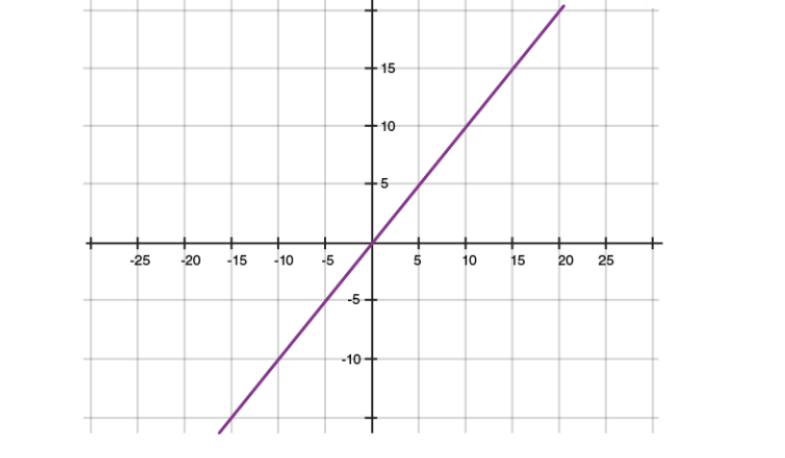
Geometrical Representation Of A Linear Polynomial
A linear polynomial has a straight line for its graph. It precisely cuts the X-axis at one place.
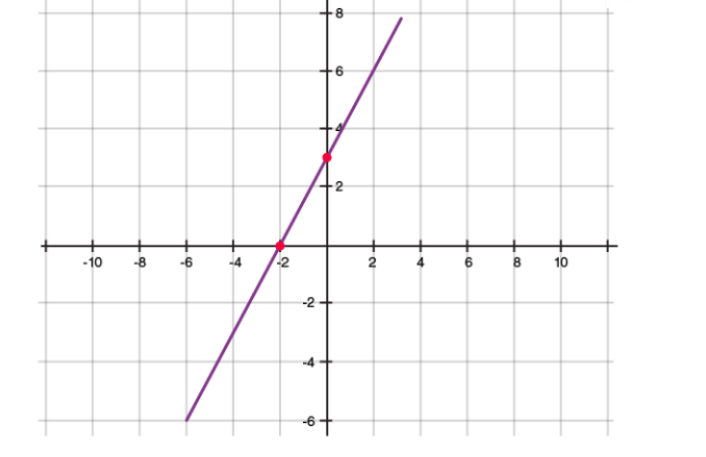
Geometrical Representation Of A Quadratic Polynomial
- A parabola is a quadratic polynomial’s graph.
- It resembles a U that, depending on the value of “a” in ax2+bx+c, either opens upwards or downwards.
- The parabola opens upwards if “a” is positive, and downwards if “a” is negative.
- The x-axis can be clipped at 0, 1, or two points.
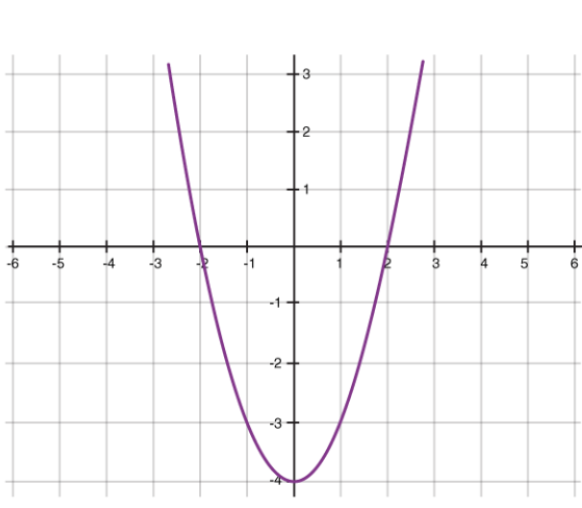
Graph of a polynomial which cuts the x-axis in two distinct points (a>0)
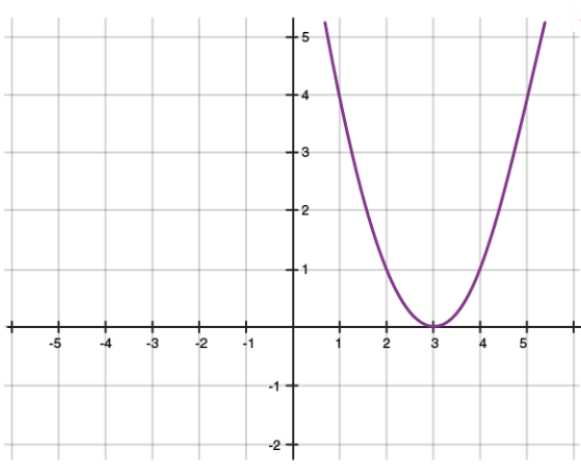
A quadratic polynomial’s (a<0) graph showing that it does not touch the x-axis.
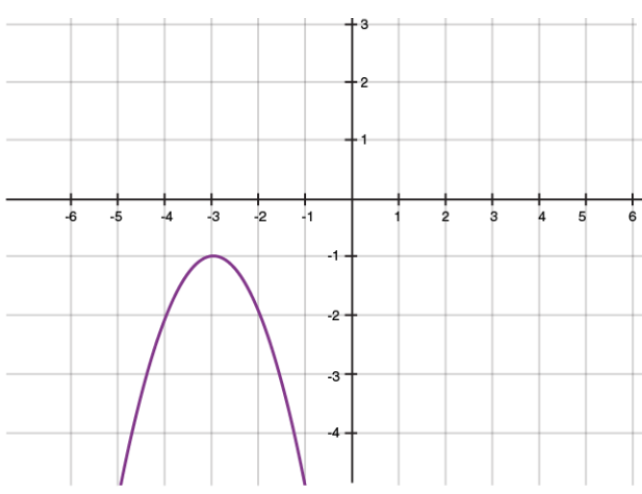
Graph of the polynomial x^n
For a polynomial of the form y=xn where n is a whole number:
- as n increases, the graph becomes steeper or draws closer to the Y-axis
- If n is odd, the graph lies in the first and third quadrants
- If n is even, the graph lies in the first and second quadrants
- The graph of y=−x^n is the reflection of the graph of y=x^n on the x-axis
Check the Polynomial graph with various degrees below.
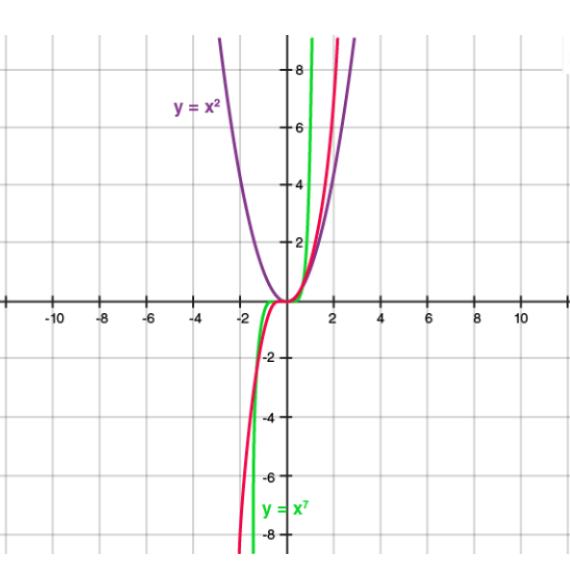
Zero of a Polynomial Video Course
Candidates can check the detailed course on zero of a polynomial below.
Zero Polynomials Examples
Example 1: If the sum of zeroes of the quadratic polynomial 3x² – kx + 6 is 3, then find the value of k.
Solution: Here a = 3, b = -k, c = 6
Sum of the zeroes, (α + β) = −ba = 3 …..(given)
⇒ −(−k)3 = 3
⇒ k = 9
Example 2: Find the condition that zeroes of polynomial p(x) = ax² + bx + c are reciprocal of each other.
Solution: Let α and 1α be the zeroes of P(x).
P(a) = ax² + bx + c …(given)
Product of zeroes = ca
⇒ α × 1α = ca
⇒ 1 = ca
⇒ a = c (Required condition)
Coefficient of x² = Constant term
Example 3: Find a quadratic polynomial, the sum and product of whose zeroes are -8 and 12 respectively. Hence find the zeroes.
Solution: Let Sum of zeroes (α + β) = S = -8 …[Given]
Product of zeroes (αβ) = P = 12 …[Given]
Quadratic polynomial is x² – Sx + P
= x² – (-8)x + 12
= x² + 8x + 12
= x² + 6x + 2x + 12
= x(x + 6) + 2(x + 6)
= (x + 2)(x + 6)
Hence the zeroes are:
x + 2 = 0 or x + 6 = 0
or, x = -2 or x = -6
Example 4: Can (x – 2) be the remainder on division of a polynomial p(x) by (2x + 3)? Justify your answer.
Solution: In case of division of a polynomial by another polynomial, the degree of the remainder (polynomial) is always less than that of the divisor. (x – 2) can not be the remainder when p(x) is divided by (2x + 3) as the degree is the same.
Example 5: If p(x) = x³ – 2x² + kx + 5 is divided by (x – 2), the remainder is 11. Find k. Hence find all the zeroes of x³ + kx² + 3x + 1.
Solution: p(x) = x³ – 2x² + kx + 5,
When x – 2,
p(2) = (2)³ – 2(2)² + k(2) + 5
⇒ 11 = 8 – 8 + 2k + 5
⇒ 11 – 5 = 2k
⇒ 6 = 2k
⇒ k = 3
Let q(x) = x³ + kx² + 3x + 1
= x³ + 3x² + 3x + 1
= x³ + 1 + 3x² + 3x
= (x)³ + (1)³ + 3x(x + 1)
= (x + 1)³
= (x + 1) (x + 1) (x + 1) …[∵ a³ + b³ + 3ab (a + b) = (a + b)3]
All zeroes are:
x + 1 = 0 ⇒ x = -1
x + 1 = 0 ⇒ x = -1
x + 1 = 0 ⇒ x = -1
Hence zeroes are -1, -1 and -1.
| Related Articles | |
| Complementary Angles | Corresponding Angles |
| 0 Factorial | Profit and Loss Formula |
| Fraction to Percent | Perfect Squares |

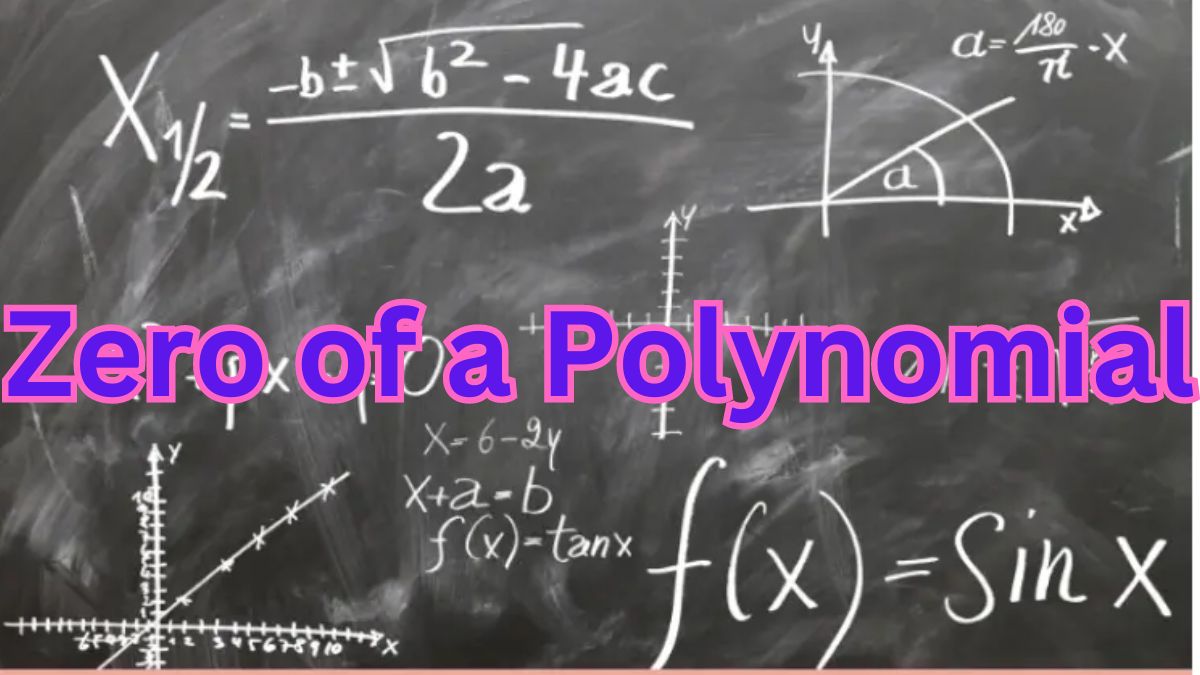








 Greater Than and Less Than, Equal to Sig...
Greater Than and Less Than, Equal to Sig...
 XXV Number- XXV Roman Numerals Definitio...
XXV Number- XXV Roman Numerals Definitio...
 Ordinal Numbers: Meaning, Examples, Appl...
Ordinal Numbers: Meaning, Examples, Appl...






